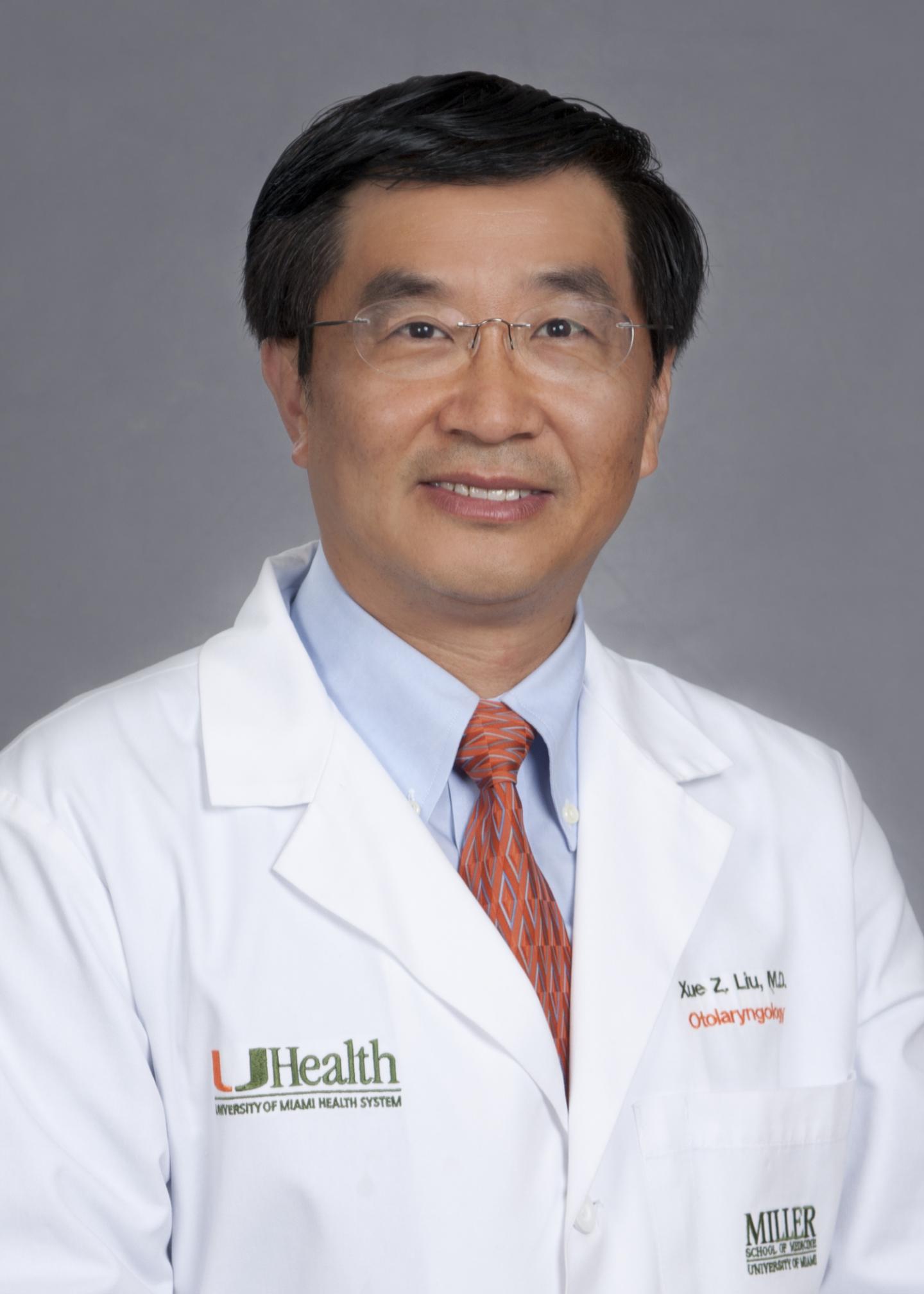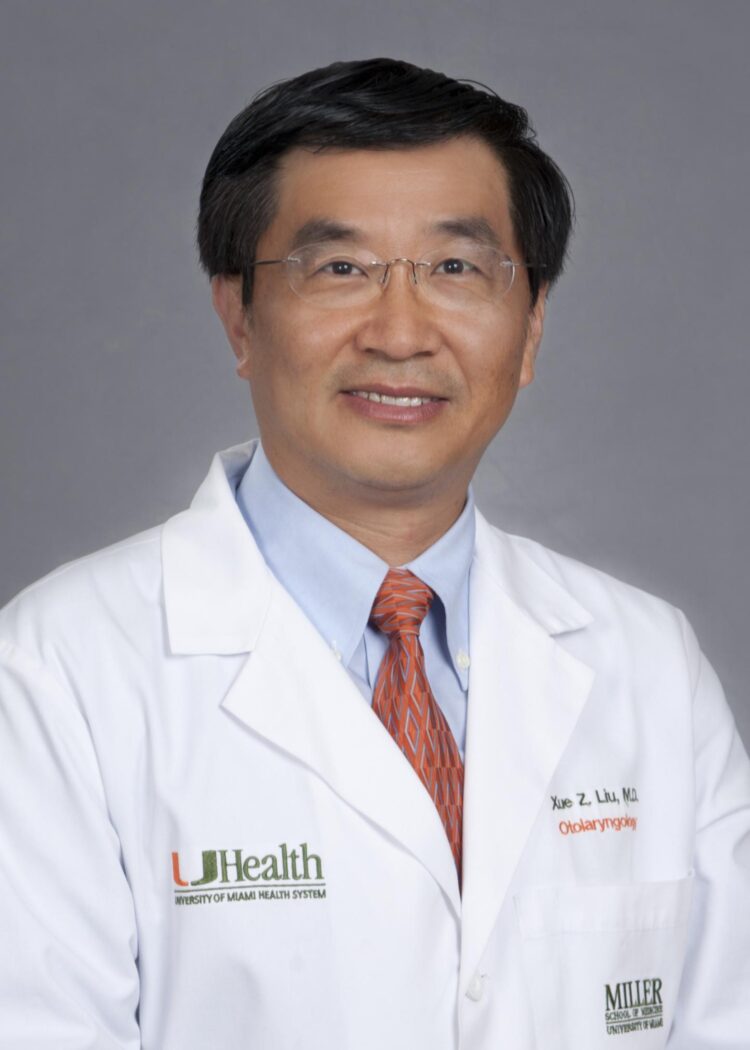
Credit: University of Miami Health System
A harsh reality has emerged as COVID-19 has spread around the globe. Several thousand doctors, nurses and others caring for COVID-19 patients are dying from the virus. To alert providers in otolaryngology, one of the hardest-hit medical specialties, about the high risk of transmission and how to avoid it, University of Miami Miller School of Medicine researchers studied data from China.
The results will be published in the journal Otolaryngology-Head and Neck Surgery and are also available on the American Academy of Otolaryngology-Head and Surgery website here.
Otolaryngologists routinely come into direct contact with patients who have upper respiratory issues. Otolaryngologists are also on the frontlines at hospitals during the pandemic, performing such procedures as tracheotomies, during which they surgically create a hole in the windpipe to help patients breathe, according to Xuezhong Liu, M.D., Ph.D., the Marian and Walter Hotchkiss Endowed Chair in Otolaryngology and vice chairman of otolaryngology at University of Miami Miller School of Medicine.
Regardless of whether otolaryngologists practice in the hospital or community, the nature of the specialty puts them at high risk for COVID-19 infection. In fact, they might not realize they’re encountering a positive patient because COVID-19 symptoms often mimic those they see routinely with other conditions.
“Recent evidence suggests that more than half of COVID-19 patients don’t have a fever early in the course of the disease. They might have mild or no symptoms but can easily spread COVID-19. Otolaryngologists and other specialists who see patients for things such as a runny nose, loss of taste or smell, or a minor sore throat or cough, might not realize the patient before them has COVID-19,” Dr. Liu said.
To help them alert otolaryngologists about the high risk of transmission from even mild and asymptomatic patients and what to do to prevent transmission, Dr. Liu and colleagues looked at data from China. Three of the paper’s coauthors are former clinical fellows at the Miller School, including Drs. Qi Yao, who works at an academic center in Wuhan; Di Zhang from the otolaryngology department of a hospital in Shenzhen; and Yilai Shu, from an academic otolaryngology department in Shanghai.
The researchers studied 20 hospitalized COVID-19 patients from ENT departments at four Chinese hospitals during the pandemic. They found ENTs performed six tracheotomies. Six patients underwent procedures to control nose bleeding and seven were treated for routine ENT complaints, such as sore throat, nasal congestion, and loss of the ability to smell.
Despite coming into close contact and performing procedures on hospitalized COVID-19 patients, none of the ENT health care workers got the virus. All implemented appropriate protection strategies, whether in the hospital or outpatient setting.
The message to otolaryngology providers is to suspect COVID-19 in all patient encounters and to take necessary precautions with personal protective equipment, including at the very least N95 masks and face shields. Data from China suggest providers who protect themselves are far less likely to contract the virus, according to Dr. Liu.
Other protective strategies used in China include pre-appointment screening, triaging, restriction of non-urgent visits and surgeries, and telemedicine.
The findings emphasize the need for hospitals and outpatient clinics to provide the appropriate personal protective equipment (PPE) for healthcare workers, based on their job, work area and degree of exposure risk, according to the paper.
“PPE is the most obvious aspect of infection control,” the authors wrote.
In China, ENT health care workers had third-level protection — the highest — when performing invasive procedures, such as a tracheotomy, in the hospital. They used second-level protection measures for more routine evaluations, treatments and throat swabs. Second-level protection includes protective masks, face shields, protective clothing, gloves and more.
It’s also important for ENT providers in the community to realize that they can easily catch the virus from people who have no fever and common mild symptoms or no symptoms. Relatively routine symptoms, like loss of taste and smell, are early warning signs of COVID-19 infection, according to Dr. Liu.
“We can avoid infection even in our at-risk specialty if we take the proper precautions,” he said.
Other high-risk specialties, he noted, include emergency medicine, anesthesiology and ophthalmology.
###
Miller School coauthors on the study are Eric Nisenbaum, M.D., M.Sc., otolaryngology resident; Roy Casiano, M.D., professor and vice chair of otolaryngology and director of the Rhinology and Endoscopic Skull Base Program; Donald Topping Weed, M.D., professor and vice chair for academic affairs in otolaryngology; Zoukaa B. Sargi, M.D., M.P.H., associate professor of clinical otolaryngology and neurosurgery; and Fred F. Telischi, M.E.E., M.D., the James R. Chandler Chair in Otolaryngology, chairman of otolaryngology and professor of neurological surgery and biomedical engineering.
Media Contact
Joanna Palmer
[email protected]
Original Source
https:/





